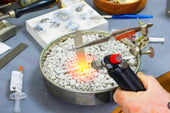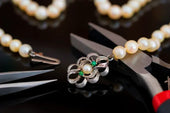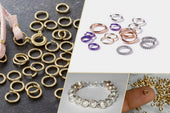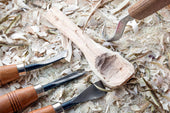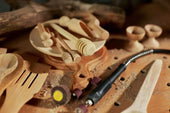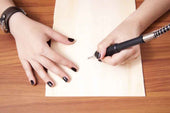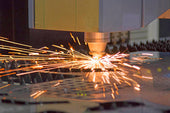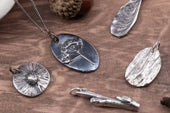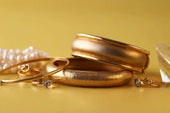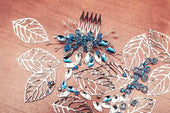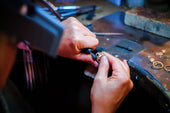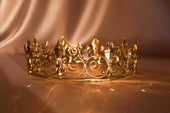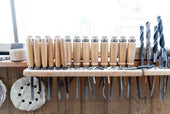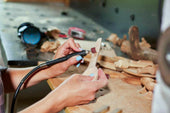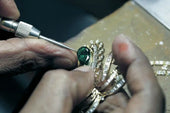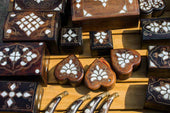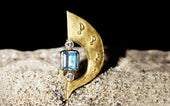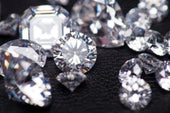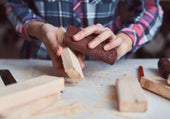Stereo microscope, once mainly used for scientific research and industrial testing tools, now also quietly into the world of carving art. In today's increasingly sophisticated carving process, stereomicroscope is not only a window to observe the microscopic world, but also an indispensable creative aid for carving artists. This article will take you in-depth understanding of the stereo microscope how to empower the creation of carving, explore its unique value in the micro-sculpture, jewelry appraisal and identification of authenticity of antiques.
Why stereo microscope and carving related
The art of engraving is a craft that requires a high level of detail, especially when it comes to micro-carving or jewelry making, where precision to the micron level is especially important. Stereo microscope, due to its stereoscopic vision and long working distance, enables the artist to observe and manipulate the work under high magnification, which greatly enhances the precision and efficiency of engraving. Whether it is metal, wood, jade or glass, the stereo microscope can help the engraver to precisely control the tools and perfectly render the details of the work.
Do you know about Stereo Microscope?
Stereo Microscope (Stereo Microscope), also known as solid microscope, has two eyepieces on the left and right and two objective lenses composed of optical system, can provide three-dimensional image. This advantage allows it to shine in scenes that require depth perception, such as engraving, electronic soldering, and jewelry making. It typically has a magnification range of 10x to 80x for engraving projects of varying complexity.
Types of engraving that a stereo microscope can be applied to
The wide applicability of the stereo microscope allows it to play an important role in a variety of engraving scenarios:
Artistic Sculpture
Artistic micro-carving, also known as micro-engraving, is an art form in which patterns or text are engraved on the surface of very small objects. In this highly delicate operation, the stereomicroscope becomes the sculptor's third eye. By magnifying the points of contact between the engraving tool and the surface of the work, the artist can control the angle and depth of each stroke, resulting in powerful miniature works of art, such as grains of rice engraving and needlepoint engraving.
Hand-carved high-precision works
Hand carving often relies on the carver's experience and sense of touch, but when it comes to high-precision creations, such as delicate facial expressions of characters and complex texture carvings, it is difficult for the naked eye to complete precise control. At this time, the use of stereo microscope with fine engraving tools can help artists to analyze and process the works layer by layer, not only to improve the quality of engraving, but also to reduce the risk of misuse.
Identify the authenticity of gemstones in engraved jewelry
In jewelry engraving, stereomicroscope is not only used for engraving itself, but also used to identify the authenticity of gemstones. By microscopically observing the internal structure of the gemstone, bubbles, inclusions and other tiny features, experienced users can determine whether it is a natural gemstone or a treated synthetic product. This feature is especially crucial in the process of jewelry trading and collecting, effectively avoiding the risk of buying fakes at high prices.
Observe the authenticity of vintage engravings
Vintage carvings have high artistic and collection value, but there are many fakes in the market, how to accurately determine their authenticity has become a problem for collectors. A stereo microscope can magnify the carving texture, knife marks, oxidized layer and even natural wear and tear. Through these details to determine the age of the work and production process, so as to identify its authenticity. For antique enthusiasts, the stereo microscope is undoubtedly an important tool for enhancing appreciation.
Steps to make simple works with stereo microscope and tools
Beginners how to complete a small carving works with the help of stereomicroscope? Here is the basic operation process:
Choose the appropriate material: beginners can choose soft wood, wax block or soft metal, such as copper or aluminum.
Install the stereomicroscope: make sure the lens is clear, adjust to the appropriate working distance and magnification.
Prepare carving tools: such as miniature knives, electric carving pens, etc. It is best to pair them with non-slip gloves to ensure safety.
Draw a sketch: use a pencil to trace the basic pattern on the engraving material.
Start carving: slowly advance the carving under the stereomicroscope, observe the carving depth and angle, and adjust the direction of the tool in time.
Checking details and touching up: Zoom in after completion to check whether the overall lines are smooth and whether sanding or trimming is required.
Cleaning and preservation: Clean up the material residue, preserve the work and record the production process.
Through the above steps, you can not only quickly get started with the carving skills, but also fully feel the great help of stereo microscope in the actual operation.
Conclusion: Carving needs stereo microscope
The combination of carving art and stereo microscope is a perfect blend of technology and art. Whether you are a beginner or an experienced carving master, having a high-quality stereo microscope can well enhance your carving level.


